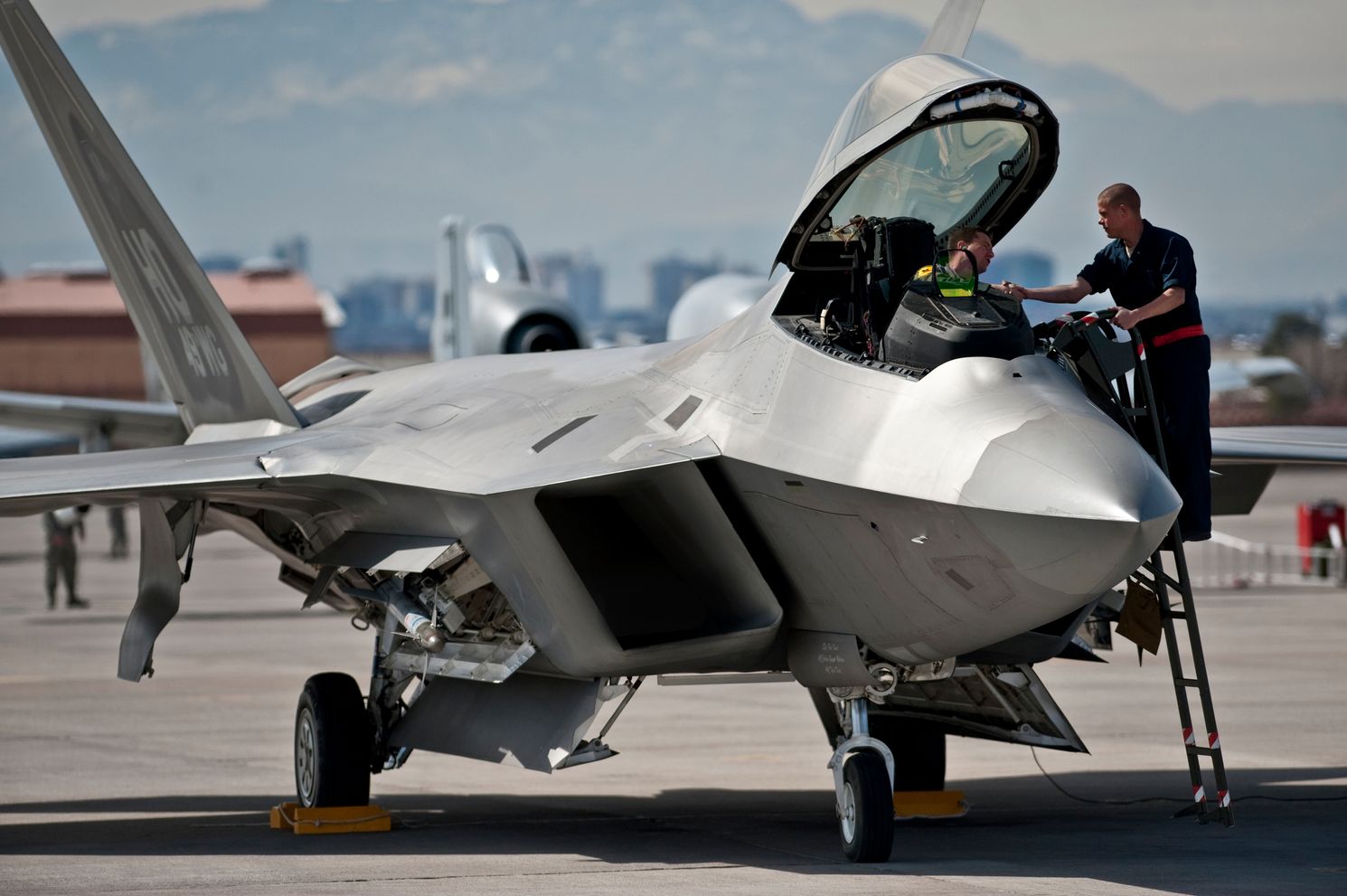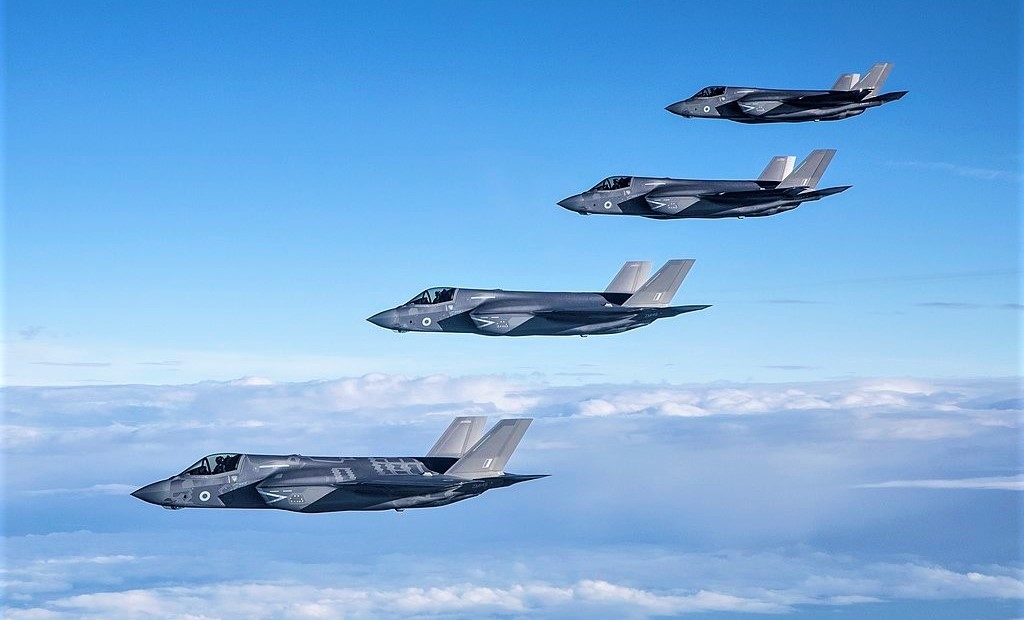
On June of 1981, the United States Air Force (USAF) came up with the Advanced Tactical Fighter (ATF) initiative to replace the aging frontline of Cold War-era fighter aircrafts, particularly the F-15 Eagle and the F-16 Fighting Falcons with a new-generation aircraft capable of exceeding the speed of sound without the need for afterburning technology that has an unparalleled performance for the air-to-air role through superior use of burgeoning technologies which included vectoring thrust and stealth that has an operational range of approximately 800 miles.
YF-22
The U.S. Air Force does not only started a project that would eventually give birth to the superior 5th generation fighter jet, but it also revolutionized the military aircraft’s industry where it saw former competitors joining forces just to meet the end-product of two prototypes. Teaming up for the YF-22 were Lockheed Martin Aeronautics and Boeing Defense, Space & Securities while Northrop stood with McDonnell Douglas for the YF-23. Each team was required to produce two prototypes, one each to test the engine YF119 of Pratt & Whitney and General Electric’s YF120. The YF-23, called as “Black Widow II” by the Northrop team was the first to hit the sky on 27 August 1990, followed by YF-22 on 29 September 1990. It was considered stealthier and faster compared to the YF-22. However, USAF Secretary Donald Rice announced on 23 April 1991 that the Lockheed prototype won because of its inherent agility in the fighter role and also, the U.S. Air Force liked the new YF119 powerplant combined with the YF-22.
F-22 breaking the speed of sound
Lockheed Martin’s historic victory gave birth to the F-22 Raptor, the world’s first ever fifth-generation, single-seat, twin-engine, all-weather stealth tactical fighter aircraft. It was designed as an air superiority fighter, but also has ground attack, electronic warfare, and signal intelligence capabilities.
The Raptor was designed for the radar beams to bounce off and scatter in all directions. Her exterior is created with no right angles and many of the surface shapes are curves with changing radii. Sawtooth edges on cockpit edges, landing gear doors and other openings also break up radar beams. The main and rear wings are lined up exactly, making them smaller on radar. Her two large vertical fins are angled to deflect the radar, and also conceals internal antennas that help maintain the invisibility of the aircraft. Two horizontal fins at the rear acts as a shield for the engine exhaust heat, keeping the thermal or infrared signature of the aircraft to a minimum. The topcoat of the body absorbs radar waves, too, and the cockpit was created to minimize the radar profile of the pilot’s helmet.
F-22 refuelling on air
The pair of Pratt & Whitney F119-PW-100 afterburning turbofan engines has maximum of 35,000 lbs of full thrust each. It can power the F-22 with a top speed of over 1,500 miles per hour (Mach 2.25) at altitude and, when on supercruise, the F-22 can hit speeds of 1,200 miles per hour (Mach 1.8). Operational range is at 2,000 miles, (1,200 miles more than the projected 800 miles) with a combat radius of 470 miles. The aircraft can hit a service ceiling of 65,000 feet and up to 9G of gravitational force.
Vectoring thrust of the Pratt & Whitney F119-PW-100 afterburning turbofan engine
The main reason for the F-22’s superior maneuverability compared to other aircraft is its nozzle. Ordinarily, the nozzle directs the flow of hot exhaust gases out of the engine and afterburner. But with the F-22, the pilot can control or move the vectoring nozzle up and down by 20°. Thrust vectoring works automatically in response to commands from the pilot, when the pilot turns the aircraft, the nozzle moves in the desired direction along with the elevator, rudder and aileron control surfaces. The vectoring nozzle increases the roll rate of the Raptor by 50 percent, making it extremely maneuverable.
F-22’s cockpit
Inside the cockpit are six color customizable multi-function liquid crystal displays (LCD). The main is an 8-inch x 8-inch LCD mounted under center between the pilot’s knees, this gives the plan view of the air and ground tactical situation. The other two smaller displays on the upper corners show communication, navigation, identification and flight information. Three secondary displays across the middle show air-threat, ground-threat and stores-management data. It was also fitted with a heads-up display (HUD), this projects information in front of the pilot’s view, showing target status, weapon status and cues that indicate if the weapons are locked on the target to keep the pilots attention at the mission. The aircraft can create a wireless data link to share tactical information, link up to coordinate attacks with a wingman, communicate with Airborne Warning & Control System (AWACS) aircraft and receive downloads from reconnaissance planes without breaking radio silence.
At the heart of this cutting edge technology are two common integrated processor (CIP) units, these units process all information for sensors and weapons. Controlling the aircraft is via a left-hand throttle column and a right-hand control stick, both featuring multi-functional switches for HOTAS (Hands-On Throttle and Stick).
F-22 taking off

The AN/APG-77 radar and the integrated Radar Warning Receiver (RWR) gives the F-22 first-look, first-shot, first-kill capability. Specifically designed for the Raptor, the radar can acquire the most potent threat to the aircraft and engage within 135 miles. Also, the radar can jam enemy electronics systems and communicate voice and data information over a secure link. If in any case the aircraft is locked on with a heat-seeking or radar-guided missile, the Raptor will release flares, sends out chaff and small pieces of reflective material, to disperse radar waves and confuse a radar-guided missile’s tracking system.
F-22 flying with weapons bay open
Embedded inside the starboard’s wing root is the General Electric’s M61A2 Vulcan 20mm rotary cannon loaded with 480 rounds. The 20mm cannon, based on their painful experience in the Vietnam War, is proven useful in close range combat against other aircrafts. A retractable door covers the gun for stealth. The main weapons bay can carry six radar-guided AIM-120C medium-range air-to-air missiles, two AIM-120C can be replaced with two 1,000-pound GBU-32 Joint Direct Attack Munitions (JDAM) in case of ground attack. Two smaller bays on the sides of the fuselage, aft of the engine intakes, hold two heat-seeking AIM-9 Sidewinder short-range air-to-air missiles. During missile launch, the weapons bay doors open for less than a second, during which hydraulic arms pushes the missile clear of the aircraft. Thus, lowering the vulnerability of the aircraft to radar detection during missile launch at high speed flights.





